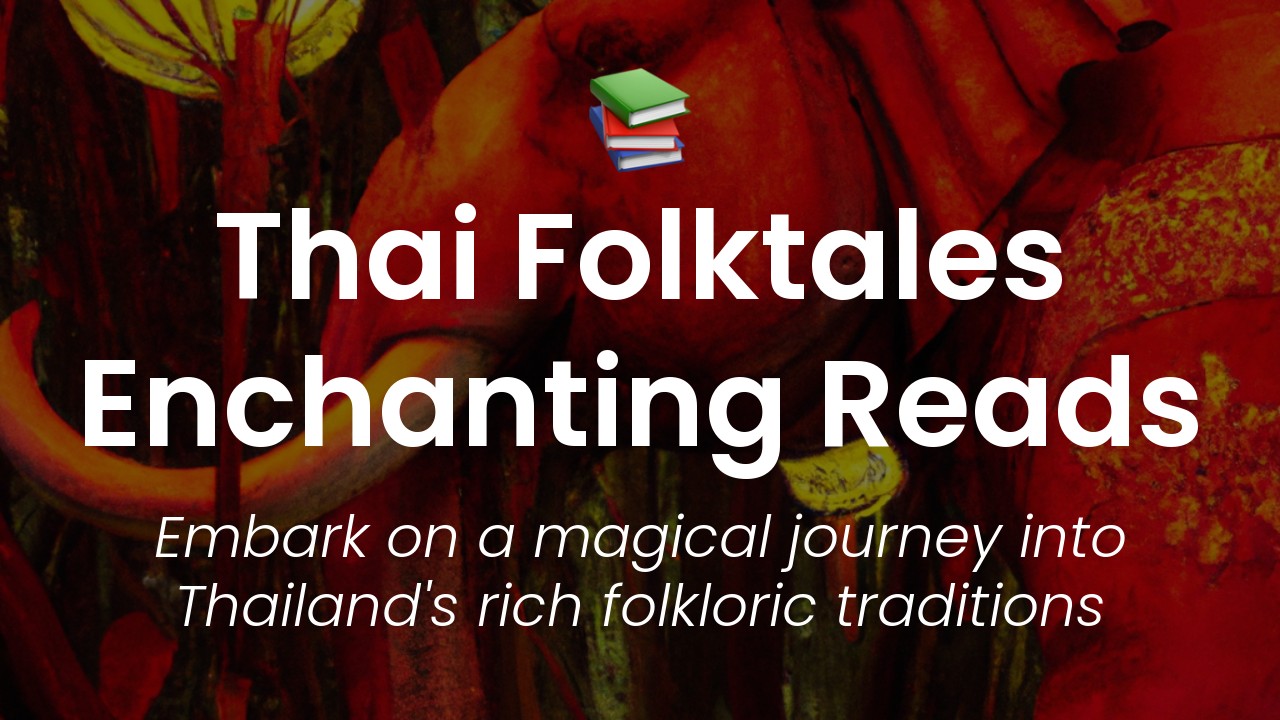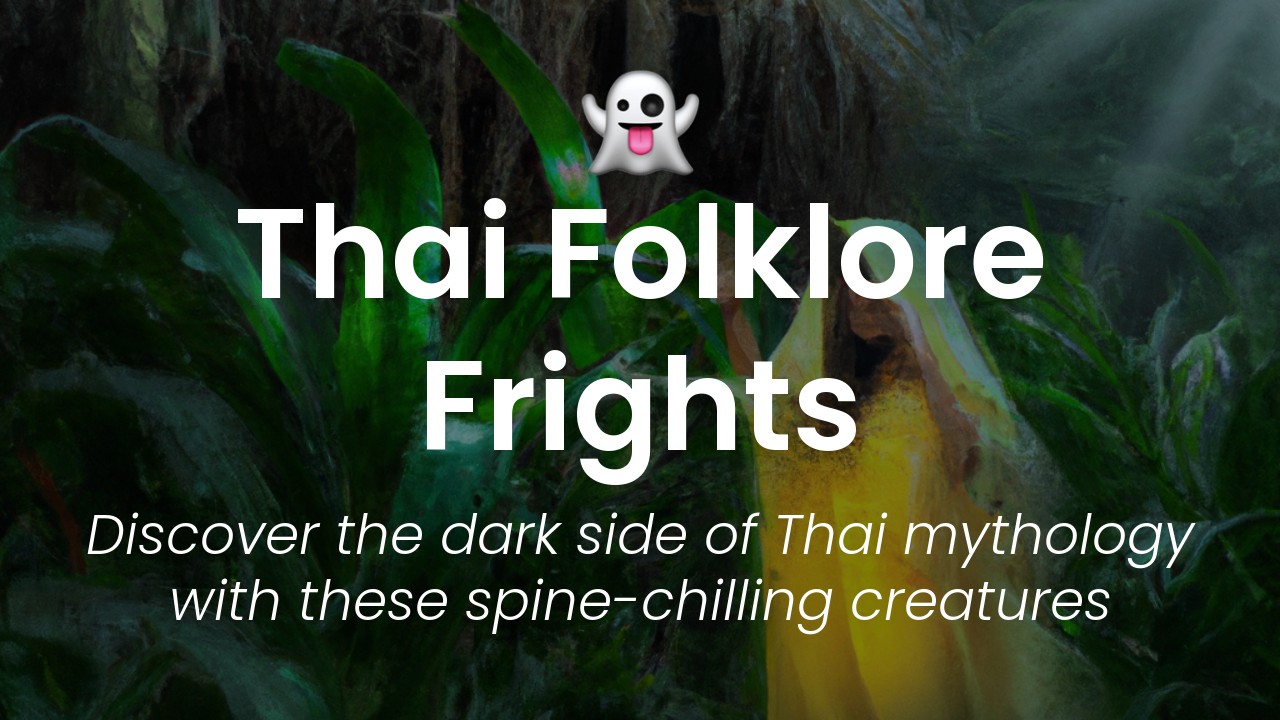Hello, dear readers! As a Thai woman who is proud of my country's rich culture and traditions, I am fascinated by our folktales. Our folk literature, which has been passed down from generation to generation, is an eternal source of inspiration for writers, artists, and filmmakers.
Thai folktales are not only entertaining but also educational, teaching us about virtues like kindness, gratitude, and honesty. They often feature magical elements, such as talking animals, ghosts, and spirits, which add a sense of wonder and awe to the stories.
In this article, I want to share with you some of my favorite Thai folktales from literature. I believe that these stories will not only entertain you but also deepen your understanding of our culture and way of life. So sit back, relax, and let me take you on a journey through the mesmerizing world of Thai folktales.
The mythical creature of the Naga
One of the most famous mythical creatures in Thai folklore is the Naga, a giant serpent with multiple heads and the body of a snake. The Naga is believed to inhabit bodies of water, such as rivers and oceans, and is thought to be a symbol of strength and power.
The Naga is often depicted in Thai literature, art, and architecture, with some of the most well-known examples being the Naga statues at the Grand Palace in Bangkok and the Naga bridge at the temple of Wat Phra That Doi Suthep in Chiang Mai.
In literature, the Naga is often portrayed as a powerful and benevolent creature, and is seen as a protector of the Buddha and the Buddhist teachings. It is also believed to have the power to bring rain and control floods.
The legend of the Golden Swan
Another popular folktale in Thai literature is the legend of the Golden Swan, which tells the story of a beautiful swan with golden feathers that lived in a magical kingdom called “Swan City.”
The Golden Swan was known to bring prosperity and good luck to the people of Swan City, and was highly revered by all who lived there. However, one day a greedy and selfish prince tried to capture the swan, leading to a series of tragic events.
The story of the Golden Swan is often seen as a cautionary tale about the dangers of greed and the importance of living in harmony with nature.
The tale of Mae Nak, the ghost bride
One of the most famous and beloved ghost stories in Thai literature is the tale of Mae Nak, a young woman who died while giving birth to her child and returned as a vengeful spirit to haunt her husband and their village.
The story of Mae Nak is believed to be based on a true event that took place in Bangkok in the early 19th century, and has been adapted into numerous films, plays, and books over the years.
Despite its dark and chilling subject matter, the tale of Mae Nak is often seen as a testament to the power of love and the enduring nature of the human spirit.
The adventures of Khun Chang Khun Phaen
One of the most famous works of literature in Thailand is the epic poem “Khun Chang Khun Phaen,” which tells the story of the adventures of two warriors, Khun Chang and Khun Phaen, who compete for the affections of a beautiful woman named Wanthong.
The poem was written in the 17th century by an anonymous author and has since become a beloved classic of Thai literature.
The adventures of Khun Chang and Khun Phaen are often seen as a reflection of the courtly and chivalric ideals of the time period, and as a tribute to the timeless themes of love, honor, and loyalty.
The origins of the Ramakien epic
The Ramakien is another epic poem that has played an important role in Thai literature and culture for centuries. The poem tells the story of Rama, a warrior prince who sets out to rescue his beloved wife Sita from the demon king Ravana.
The Ramakien is believed to have been based on the Indian epic, the Ramayana, which was brought to Thailand by Hindu and Buddhist monks in the 4th and 5th centuries.
Over time, the Ramakien has become an integral part of Thai mythology and has been adapted into countless forms of art and entertainment, including movies, plays, and puppet shows.
The story behind the Four Regional Fables
The Four Regional Fables is a collection of folktales from different regions of Thailand, each with unique characters and storylines.
The Northeastern fable, “The Tale of Khun Chang and Khun Phaen,” was discussed earlier in this article. The Northern fable, “The Story of Mahajanaka,” tells the story of a prince who sails the seas and faces numerous challenges before becoming a wise and respected king.
The Eastern fable, “The Story of Inao,” is a story about a young boy who must overcome a series of obstacles in order to rescue his true love. The Southern fable, “The Story of Krai Thong,” is a tale of a brave warrior who sets out to stop an evil sea monster from terrorizing his village.
Each of these fables is unique and reflects the customs and traditions of the regions in which they originated. Together, they are a testament to the rich and diverse cultural heritage of Thailand.
How these folktales shaped Thai culture
The folktales of Thailand have played a vital role in shaping the country’s culture and identity over the centuries. They have been passed down from generation to generation and continue to be a cherished part of Thai tradition.
Through these tales, Thais have learned important values such as honor, loyalty, and respect for nature. They have also been able to celebrate their unique customs and traditions, while at the same time highlighting the common humanity that binds us all together.
From the mythical creature of the Naga to the epic adventures of Khun Chang and Khun Phaen, Thai folklore is a rich and fascinating tapestry of stories that continues to captivate and inspire.







